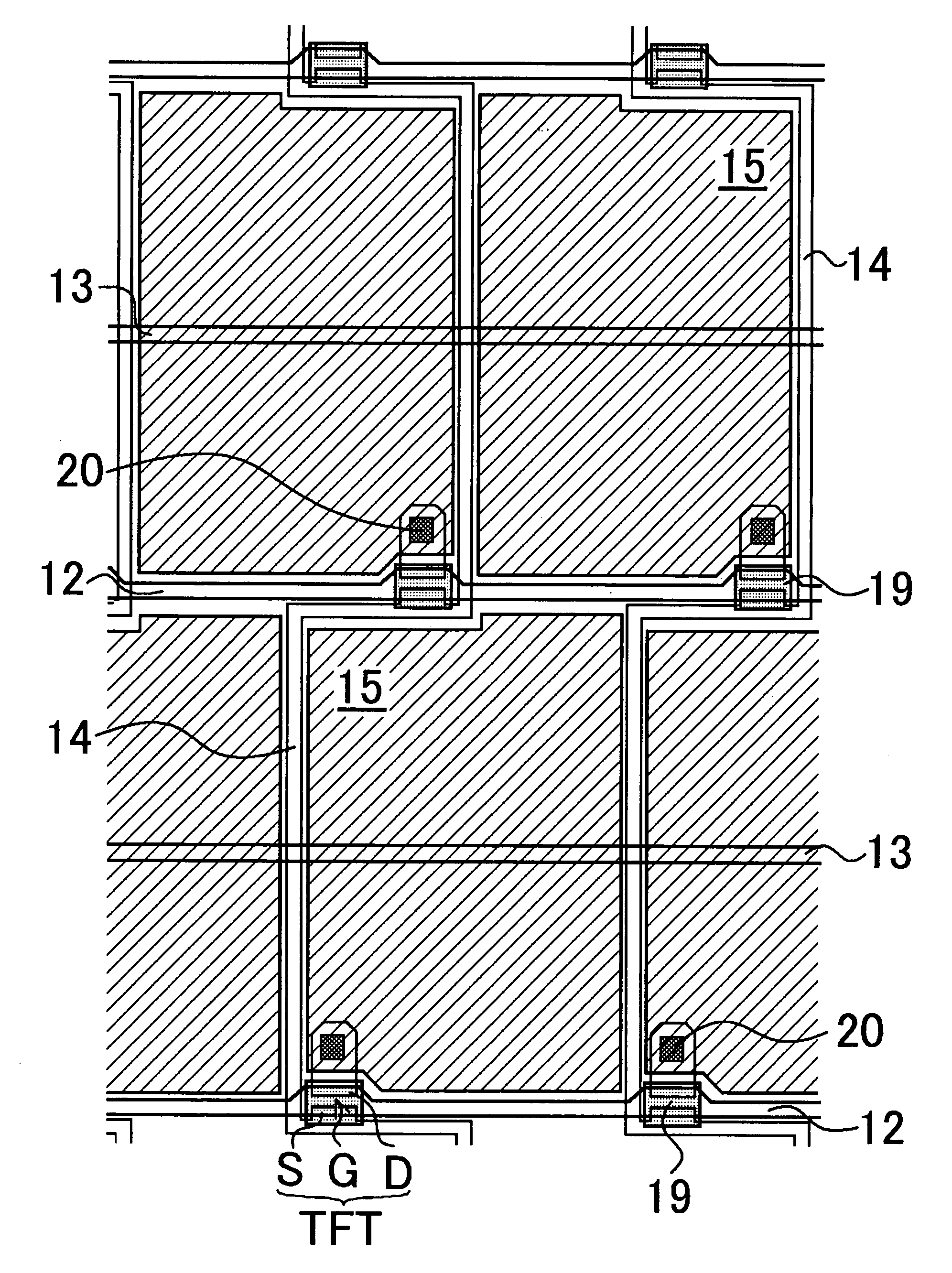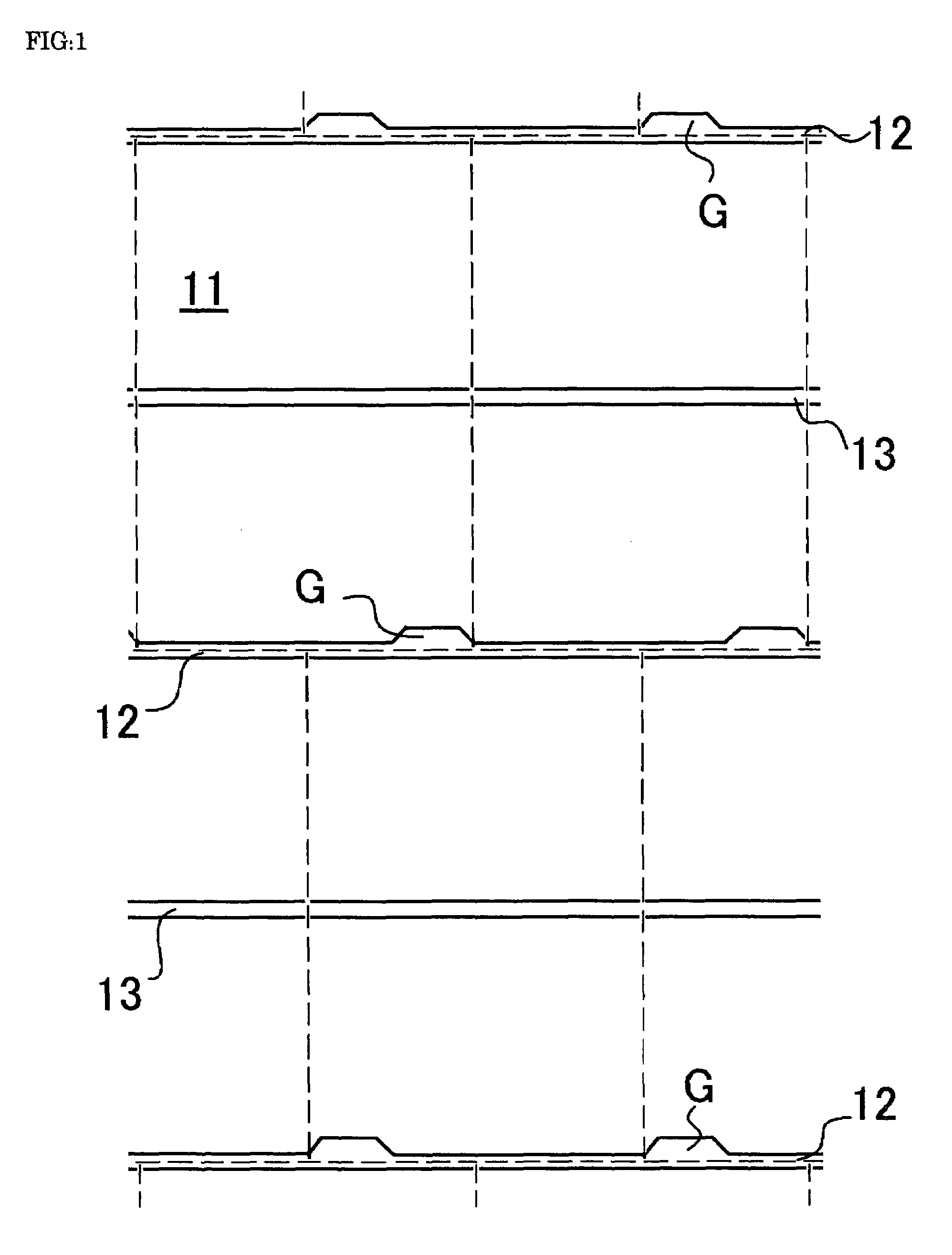FFS mode liquid crystal display panel
- Summary
- Abstract
- Description
- Claims
- Application Information
AI Technical Summary
Benefits of technology
Problems solved by technology
Method used
Image
Examples
Embodiment Construction
[0045]Hereinafter, preferred embodiments of the present invention will be described with reference to the drawings. The following embodiments are examples to show features of an FFS mode LCD panel, in order of manufacturing steps, to embody the concept of the present invention. The present invention is not intended to be specified to this FFS mode LCD panel, and may be equally applied to other embodiments not departing from the spirit and scope of the appended claims.
[0046]FIG. 1 is a diagram showing a pattern of scanning lines and common lines formed by a scanning line and common line forming process. FIG. 2 is a diagram showing a pattern of common electrodes formed by a common electrode forming process. FIG. 3 is a diagram showing a pattern of semiconductor layers formed by a semiconductor forming process. FIG. 4 is a diagram showing a pattern of signal lines and drain electrodes formed by a signal line and drain electrode forming process. FIG. 5 is a diagram showing a pattern of ...
PUM
 Login to View More
Login to View More Abstract
Description
Claims
Application Information
 Login to View More
Login to View More - R&D
- Intellectual Property
- Life Sciences
- Materials
- Tech Scout
- Unparalleled Data Quality
- Higher Quality Content
- 60% Fewer Hallucinations
Browse by: Latest US Patents, China's latest patents, Technical Efficacy Thesaurus, Application Domain, Technology Topic, Popular Technical Reports.
© 2025 PatSnap. All rights reserved.Legal|Privacy policy|Modern Slavery Act Transparency Statement|Sitemap|About US| Contact US: help@patsnap.com



